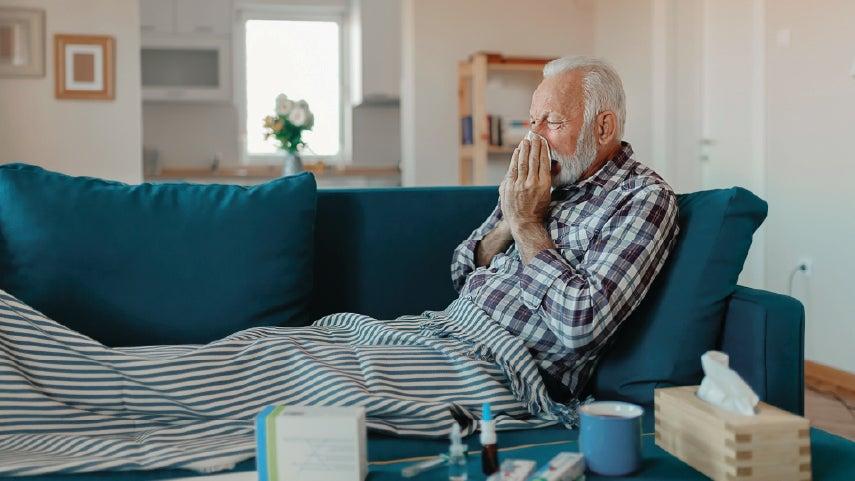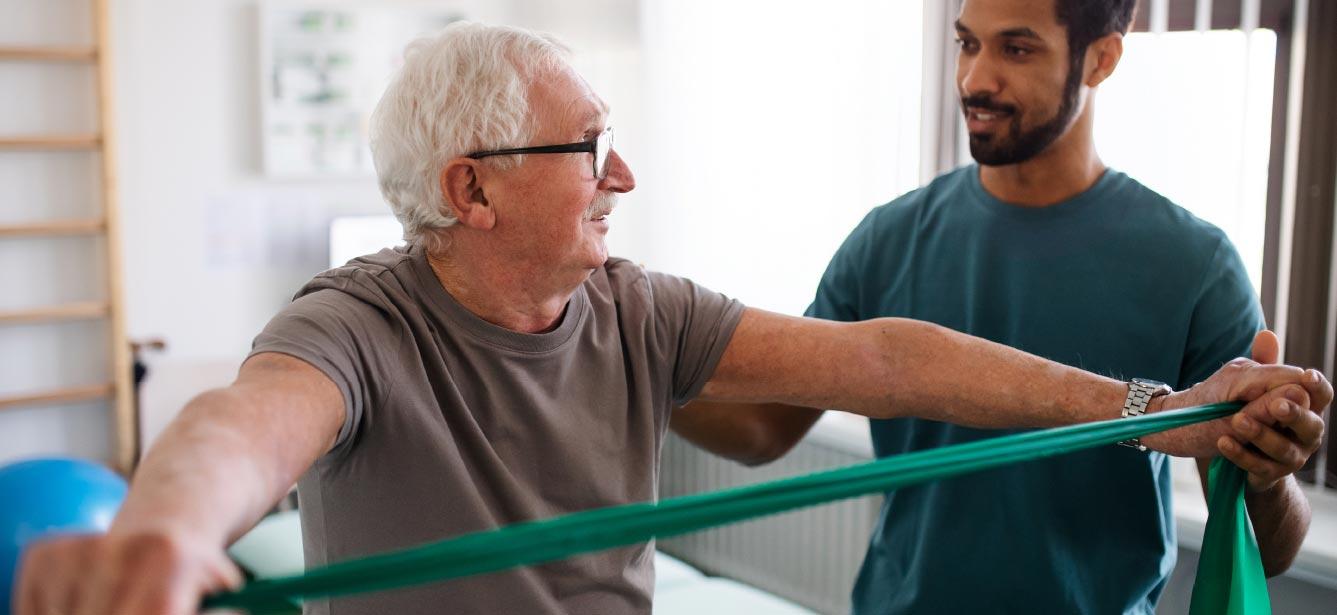
Related Topics
If you have furniture, a television, or an appliance in your home right now, you have something that could cause serious injuries or even death if it’s not properly anchored to the wall. They are all dangers hidden in plain sight.
The reality is that everyone has furniture and at least one television and appliance in their home.
The simple truth is that if they are not secured to the wall, especially furniture with drawers, doors, and shelves, they can become unstable and tip over and in the blink of an eye seriously injure or kill a child or even you!
The statistics tell us it can and does happen every day. According to the U.S. Consumer Product Safety Commission, someone is rushed to the ER every hour because of injuries caused by a furniture, TV, or appliance tip-over.
The only way to protect those you love, including yourself, from a potentially deadly tip-over is to properly secure your furniture, TVs, and appliances to the wall.
New data: Tip-over injuries and deaths of older adults are increasing
Unfortunately, the latest annual report from the U.S. Consumer Product Safety Commission (CPSC) on Tip-Overs revealed an alarming increase in the number of older adults who are being injured and killed by tip-overs. The data also tell us that the majority of older adults who were killed by a tip-over died from a dresser or chest of drawers falling on them.
Tip-overs are a rapidly emerging health hazard for older adults, but one that is easy to protect yourself from.
Tip-over injury and fatality statistics
- Injuries
- From 2020-2022 there were 17,800 people/year rushed to the ER for injuries sustained from a tip-over
- That’s 24 people every day!
- 24% were adults age 60+ (an increase from 15% the year before)
- It’s important to consider that older adults who sustain serious injuries of any kind also have a higher incidence of dying in the following year than those who do not, in part because of complications of their injuries or immobility as a result of their injuries.
- Injuries included lacerations, severed toes, broken bones, and catastrophic head and brain injuries.
- Deaths
- At least 608 people died from tip-overs from 2000-July 2023.
- From 2013-July of 2023, there were 217 reported deaths
- 71% were children under 18 (mostly children under 6)
- 3% were adults age 18-60
- 26% were adults age 60+ (last year’s report indicated 15% of deaths were older adults, an increase of 11%!)
- About every 2.5 weeks, someone dies as a result of a tip-over
These statistics are minimum estimates as we also know a significant number of tip-over incidents go unreported. Most people, including doctors, don’t know why reporting even minor injuries from a tip-over is important or how or where to do so. We also know there are a lot of near misses that go unreported.
Reporting tip-over incidents, even when no one was hurt, is important because it lets the CPSC and manufacturers know their furniture became unstable and is unsafe. Reporting tip-overs, or any other product safety hazard is easy. Visit www.saferproducts.gov or reach out to the CPSC Consumer Ombudsman directly. You can also search the site for other reports made about the products in your home.
What does it mean to have furniture tip over?
- Furniture tip-overs are responsible for the majority of tip-over injuries and deaths (83%)
- Dressers/bureaus and other furniture with drawers, doors, and shelves
- Nightstands
- Tables of various types
- Shelving units/bookcases
- Free-standing cabinets or curio cabinets
- Other furniture such as mirrors, grandfather clocks, or furniture designed to hold a TV
- Televisions are responsible for 15% of deaths (this is decreasing significantly as old CRT/”tube” televisions are being replaced with flat-screen TVs, BUT flat screen TVs still have the potential to cause serious injury or death)
- Appliances account for 3% of injuries and 7% of all deaths (stoves/ovens and refrigerators)
How do furniture tip-overs happen?
If I asked you what might cause a piece of furniture to tip over, what would you say? Do you think it is only lightweight or cheaply made furniture? Is it only tall furniture? Is it only furniture with certain kinds of legs? Is it only furniture made by certain manufacturers? Is it because the floor is uneven? Is it because it’s heavy? Is it because a child climbed on it? Something else?
I can tell you exactly why tip-overs happen. Physics.
Tip-over facts:
- Any time a human interacts with a piece of furniture or TV, there are forces involved.
- The physics of those forces with each individual interaction determines whether or not the furniture will become unstable and tip.
- Those forces are different every single time you interact with a piece of furniture, TV, or an appliance, which means the risk of a deadly tip-over is unpredictable.
- Just because your furniture, TV, or appliance hasn’t tipped over yet, doesn’t mean it can’t or won’t! It only takes one time, and you have no idea when the physics will be “just right” to cause a tip-over to happen.
- All it takes is for the center of gravity of a given piece of furniture (or television or appliance) to move forward just enough to cause it to start to tip, and then gravity takes over.
- This can happen:
- When more than one drawer is open at once (sometimes even when they are empty!)
- When a child stands in a drawer, puts some of their weight on the edge or in a drawer, or attempts to climb on the knobs or on/in drawers or shelving units.
- When an adult puts pressure on the edge of an open drawer or the top of the furniture, “catches” themselves on a piece of furniture (perhaps to recover their balance), especially an open drawer or door to steady themselves or assist them in getting up from a lower position.
- Even just the forces created from dusting the top or putting away laundry can be enough to cause a tip-over!
- When the furniture is on carpet or an uneven surface (even just slightly uneven) it is more prone to tipping.
- From an earthquake or anything that causes the floor to “shake” (even a few kids running by playing a game of hide and seek, for example).
- When heavier objects are placed in higher drawers or on higher shelves or the design of the furniture is top or front-heavy.
- When you are reaching for something on the top or adjusting a television or some other item on top of a piece of furniture
- Tip-overs happen fast! Literally in the blink of an eye. You can be in the same room and be powerless to prevent it from happening to someone else.
- By the time you hear the noise of a tip-over it is too late, the damage has been done, the injury has already occurred, and it could be catastrophic.
- It doesn’t matter how short or tall, heavy or light, or expensive or cheap the furniture is. It also doesn’t matter where it is in the home or who made it. If it’s not properly anchored to the wall, it can tip over!
- You may not be able to get out of the way fast enough or prevent it from happening, even as an adult. If you are injured or pinned under the weight of the object, or knocked unconscious, you may be unable to summon help.
This is why it’s so important to “seatbelt” your furniture to the wall. It’s the best way to protect you from an unexpected tragedy.
What about televisions?
- If you have an old “tube” style TV, it should be recycled, not given away or put in another room. I recommend cutting the cord so it can’t be used again. These CRT TVs are heavy and are far more likely to cause serious injury or death should they fall onto a child or an adult.
- Flatscreen TVs should be mounted directly on the wall if possible.
- If you have a TV on top of any piece of furniture, that furniture should be secured to the wall, AND the TV should be anchored either to the furniture or to the wall as well.
- Although flatscreen TVs are lighter, think of the weight in terms of bowling balls. A 20-pound TV falling onto a child or even just your foot is the same as dropping two bowling balls from the equivalent height. That is more than enough to break bones or cause a serious chest or head injury that could be fatal.
Megan's story
I share this information with you so you never have to experience my pain. My beautiful 3-year-old twin daughter Meghan was killed when her small, heavy, well-made dresser fell on her in the early morning while the rest of our family slept on Dec. 18, 2004.

The day she died, I made a promise to her, that she’d be the last one to die this way. And yet hundreds have died since, and hundreds of thousands more have been injured as a result of furniture and/or televisions falling on them.
A new (limited) federal law
A lot of work has been done since then by parent advocates like myself through Meghan’s Hope and the organization I co-founded, Parents Against Tip-Overs (PAT), along with collaboration with furniture manufacturers, retailers, and consumer and child safety and advocacy organizations since then, focused on making dressers and other clothing storage furniture more stable and less likely to fall on and injure or kill a small child.
After nearly two decades of advocacy and engaging with all the stakeholders, we finally passed federal legislation in December of 2022, and the STURDY Act became law. It went into effect on Sept. 1, 2023, and requires that certain dressers and other types of furniture used for storing clothes pass several stringent stability tests before they can be sold in the U.S. It also requires that the clothing storage furniture come with furniture anchors. It’s designed to protect children up to 6 years old.
Unfortunately, it does not apply to other types of furniture, nor is it designed to protect older children or adults. There are millions of at-risk dressers and other furniture with drawers, doors, and shelves in homes today that could become deadly if not properly anchored to the wall.
How do you prevent a tip-over from happening?
You wouldn’t think of getting into a car without fastening your seatbelt, right? It’s just as important to fasten your furniture to the wall with a furniture anchor. Furniture anchors, also called furniture straps or “anti-tip” devices, are like seatbelts for your furniture. They are just as important to keeping you and your family safe as a seatbelt in a car is.
How to properly secure furniture and TVs to the wall
Securing furniture and TVs to the wall is easy and relatively quick. For less than $20 and about 20 minutes, you can install a strong and effective furniture anchor to prevent a deadly tip-over. Visit the CPSC’s Anchor It! Website to learn how to properly anchor your furniture to the wall.
It’s important to know not all furniture anchors are created equally, so how do you choose?
Choosing the best furniture anchors
- Avoid furniture anchors with plastic brackets or zip-tie style anchors because the plastic can become brittle and break over time. In fact, there was recently a huge recall of plastic zip-tie style anchors for that very reason.
- Choose furniture anchors made of metal such as L-brackets which can be found at any hardware store, are inexpensive, and easy to install, although you will have to also purchase the appropriate screws for your wall type (at least an inch to an inch and a half long) for the wall.
- Another great option is the Hangman Anti-Tip Kit which comes with all the hardware for installation
- The Safety 1st Furniture Wall Straps are a favorite as they are adjustable and come with the hardware for installation, but they do contain plastic brackets. They can also be used for flat-screen TVs.
- To ensure the anchor does not pull out of the wall, it should be installed into a wood stud, which means the screws need to be long enough to go through the drywall and into the wood. If you don’t have a wood stud available, talk to your local hardware store about what type of screws/tools you need to install anchors safely into drywall (toggle bolts are recommended), cement, brick, or other wall types.
- It’s also important that the screws go into solid wood on the furniture as they will pull out of MDF or particle board, which means you may have to attach the anchor to the top or side of the furniture rather than the back.
- Don’t use anchors with adhesives, and be careful ordering online as there are a lot of “knock off” versions that are made of inferior materials. There is no requirement that furniture anchors meet any sort of testing standard, but the ones I mentioned above have good reputations.
- Remember holes in your walls can be fixed. The pain, guilt, and hole in your heart should someone you love be injured or killed from a tip-over you could have prevented never goes away.
You can help save lives by sharing this important safety information with your friends and family.Tip-overs pose a danger to people of all ages, but especially the very young and those over the age of 60. With more and more families living in multi-generational homes, being proactive about securing furniture, TVs and appliances to the wall will give you peace of mind and prevent the unthinkable from happening to you or someone you love. If you don’t feel comfortable installing the furniture anchors, ask a friend or family member or hire a handyman to help.
Please, #AnchorIt today!



